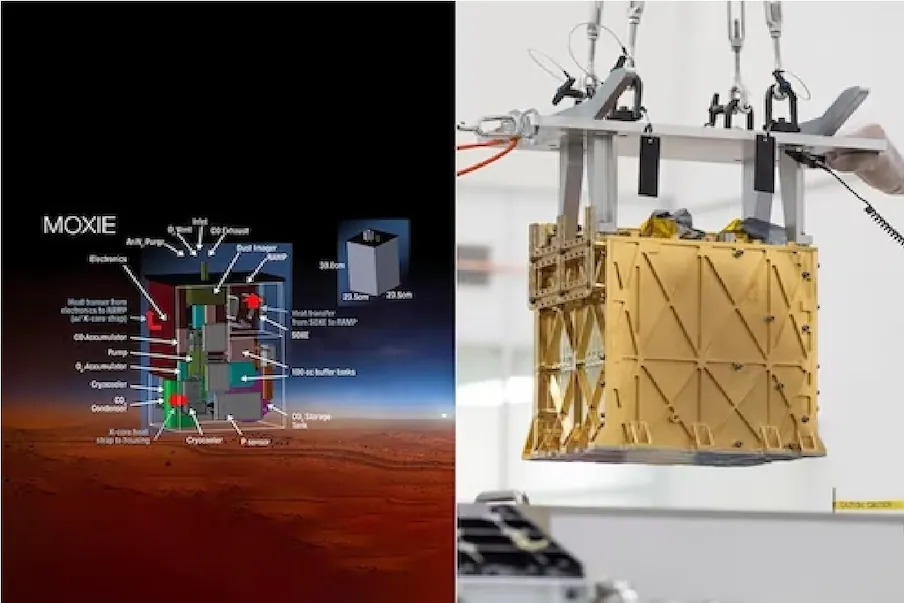In a historic stride, scientists at the National Aeronautics and Space Administration (NASA) have successfully developed a machine capable of generating oxygen on Mars. This groundbreaking achievement opens doors to future human missions on the Red Planet, marking another milestone in humanity's exploration of the cosmos.

The machine, known as MOXIE (Mars Oxygen In-Situ Resource Utilisation Experiment), resembles a microwave oven in size and appearance. MOXIE operates in tandem with the Mars Oxygen ISRU Experiment (MOXIE), a part of NASA's Perseverance Mars rover mission in 2021.
NASA has revealed that MOXIE has produced a total of 122 grammes of oxygen, exceeding its original goal by doubling the expected oxygen output. What's even more impressive is the purity of the generated oxygen, which surpasses 98%. This remarkable achievement is vital for future manned missions to Mars.
MOXIE achieves oxygen production by breaking down carbon dioxide molecules in the Martian atmosphere and converting them into oxygen. The machine employs an electrochemical process and thoroughly analyses the gas to ensure both its purity and quantity.
This achievement holds great significance for future Mars missions. In-situ resource utilisation (ISRU) like MOXIE can significantly enhance research capabilities on Mars, making it possible for scientists to explore and study the planet in greater depth.
NASA's next step is to further expand and refine this technology, aiming to create oxygen generators similar to MOXIE and develop methods for liquid oxygen storage. Michael Hecht, the chief investigator of MOXIE at MIT, expressed his optimism, stating, "MOXIE has worked as a source of inspiration for scientists working on Mars missions at NASA. It's well known that NASA can use this in the future."
NASA's continuous efforts to advance space exploration are bringing humanity closer to realising the dream of sending astronauts to live and work on Mars. This remarkable progress in oxygen production represents a significant leap forward in achieving that goal.
 বাংলায় পড়ুন
বাংলায় পড়ুন














